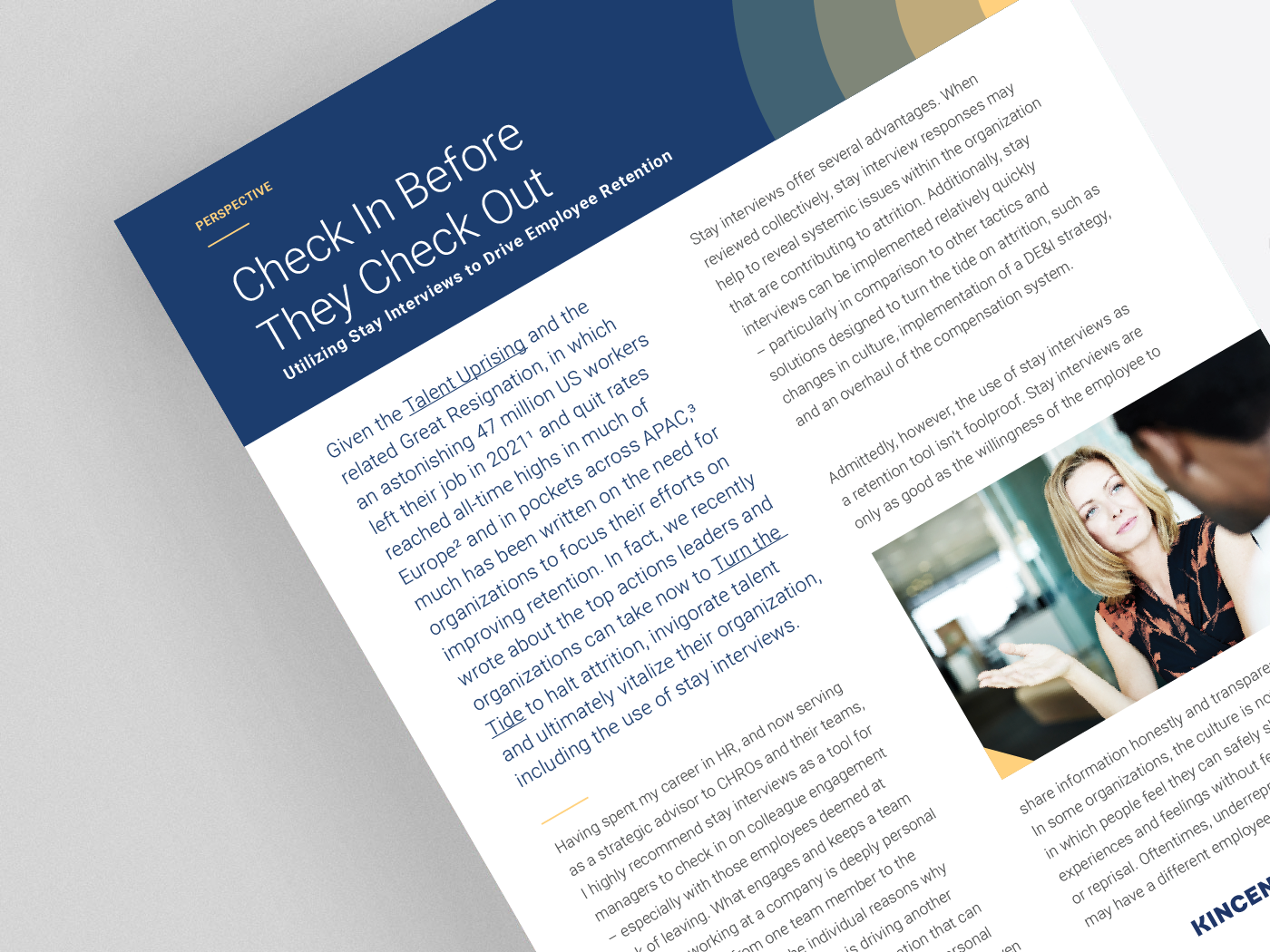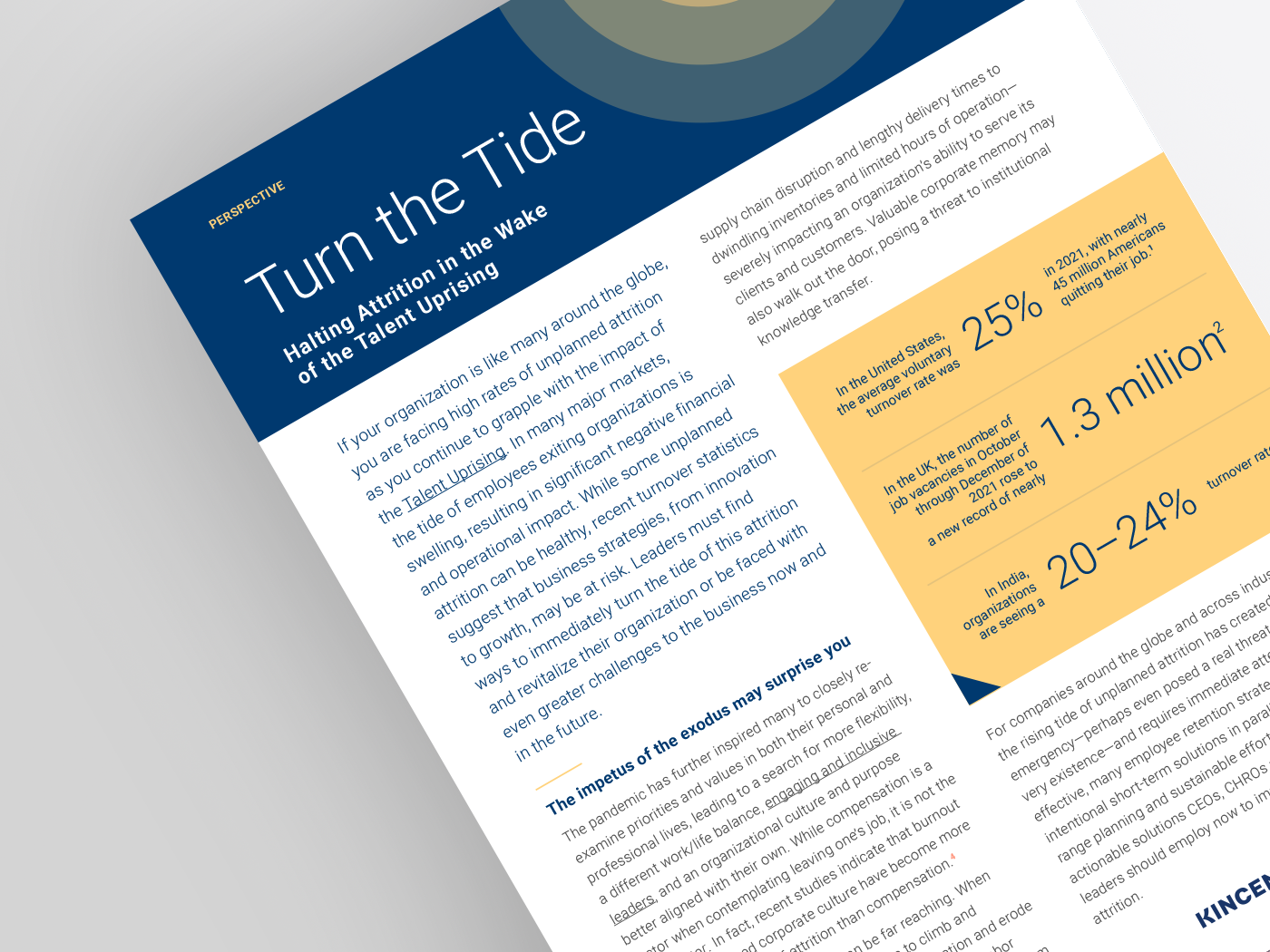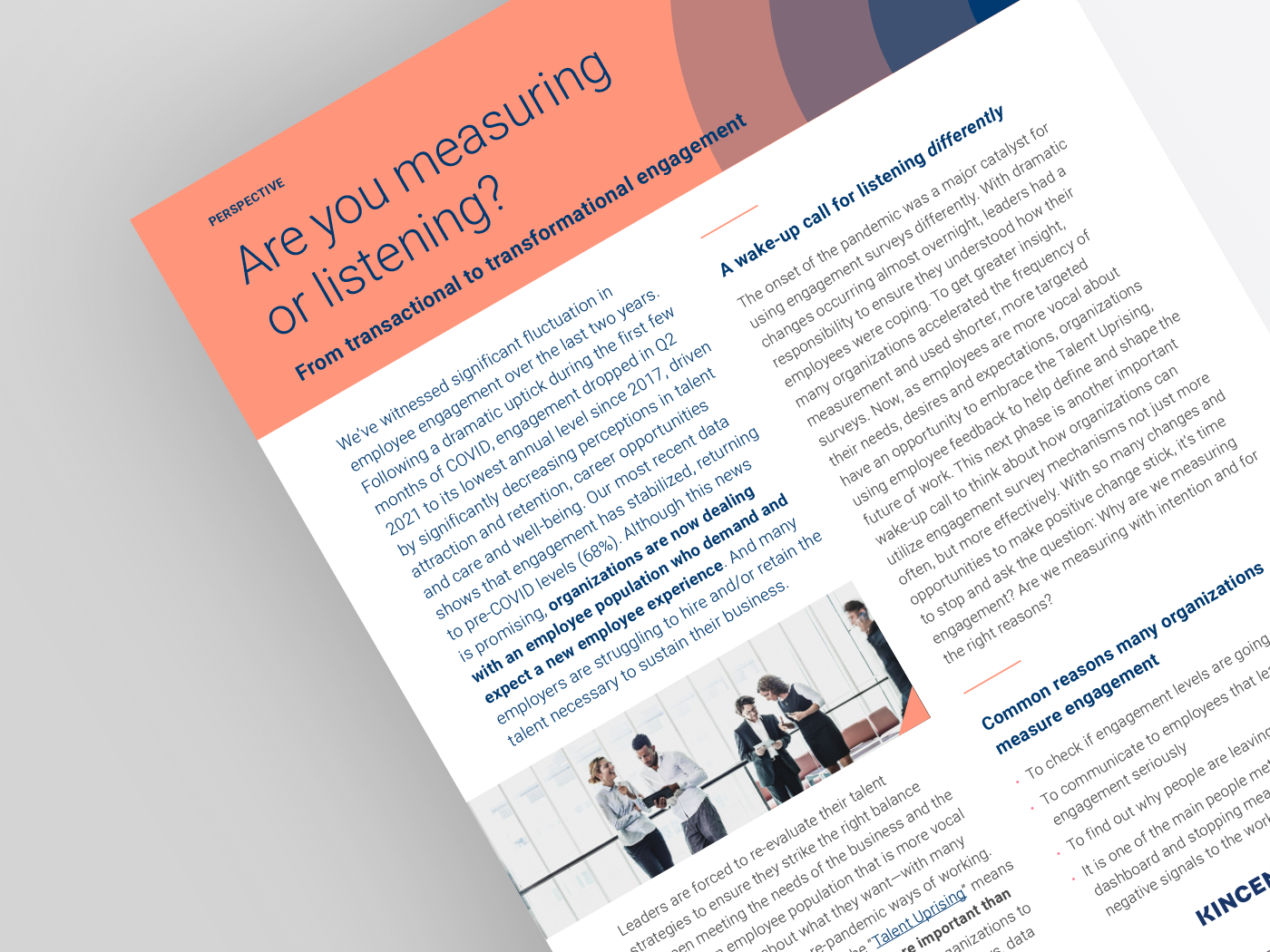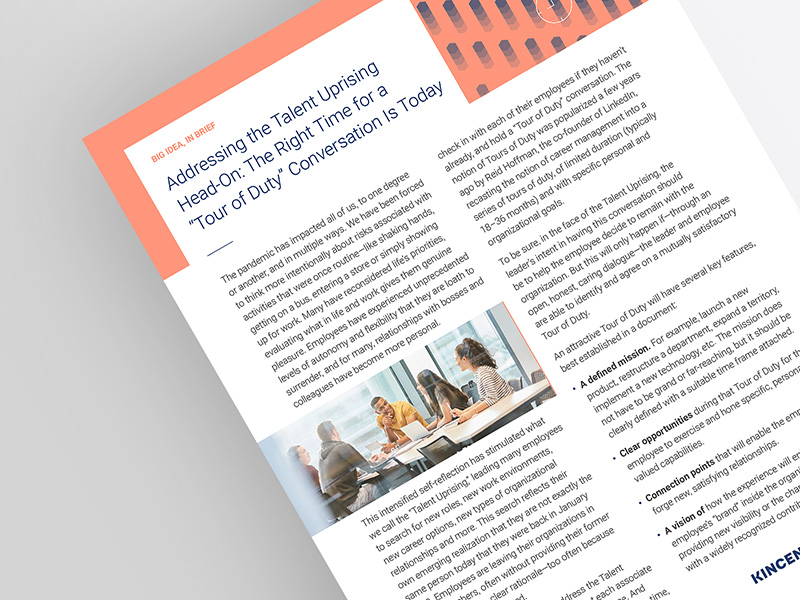
Given the Talent Uprising and the related Great Resignation, in which an astonishing 47 million US workers left their job in 2021¹ and quit rates reached all-time highs in much of Europe² and in pockets across APAC,³ much has been written on the need for organizations to focus their efforts on improving retention. In fact, we recently wrote about the top actions leaders and organizations can take now to Turn the Tide to halt attrition, invigorate talent and ultimately vitalize their organization, including the use of stay interviews.
Having spent my career in HR, and now serving as a strategic advisor to CHROs and their teams, I highly recommend stay interviews as a tool for managers to check in on colleague engagement — especially with those employees deemed at risk of leaving. What engages and keeps a team member working at a company is deeply personal and will differ from one team member to the next. Understanding the individual reasons why one employee stays or what is driving another employee to leave is critical information that can enable managers to form deeper, more personal relationships with their employees, which is proven to drive engagement and in turn mitigate attrition.
Stay interviews offer several advantages. When reviewed collectively, stay interview responses may help to reveal systemic issues within the organization that are contributing to attrition. Additionally, stay interviews can be implemented relatively quickly — particularly in comparison to other tactics and solutions designed to turn the tide on attrition, such as changes in culture, implementation of a DE&I strategy, and an overhaul of the compensation system.
Admittedly, however, the use of stay interviews as a retention tool isn’t foolproof. Stay interviews are only as good as the willingness of the employee to share information honestly and transparently. In some organizations, the culture is not one in which people feel they can safely share their experiences and feelings without fear of judgment or reprisal. Oftentimes, underrepresented talent may have a different employee experience and may not feel comfortable speaking up. If this is the case, you will need to work on establishing trust and psychological safety with your employees before these conversations yield the insights you most need to better understand the colleague experience. Another critical success factor is the ability of the manager, even after an authentic and honest conversation, to actually follow up with specific actions in response.
Given those cautions, I do believe there are ways to mitigate resignation risk with the right stay interview strategy and approach:
 Be transparent about the intention.
Be transparent about the intention.
If your normal one-on-one interactions are all business, changing the conversation to glean more personal information and explore in greater depth the employee’s attitudes about working in the company can catch the employee off guard and end up creating more barriers, not breaking them down. Preparing employees for the conversation by explaining what information you are seeking and what you plan to do with the information will begin to establish the trust needed for a good conversation. Ideally, the objective of a broad stay interview initiative is communicated at an organizational level by a trusted senior leader.
At a minimum, managers should introduce their intention in a one-on-one session in advance, giving their team members a preview of the questions they would like to go over and providing them with sufficient time to pull their thoughts together.
 Approach these conversations from a place of humility.
Approach these conversations from a place of humility.
Ideally, these conversations should have occurred throughout the entire course of the relationship, not just when there is a retention crisis. Acknowledging that perhaps you have been too focused on a task or work and haven’t done enough to get to know your team member as a whole person may go a long way in ensuring a productive conversation. Post- conversation, don’t revert to being focused solely on tasks but rather continue the work of understanding how to best engage your team members.
 Capture the feedback and act on it!
Capture the feedback and act on it!
There is nothing worse than asking employees for their honesty and candor and then nothing changes! Before you begin any stay interview program, make sure you are willing and able to respond and react to their feedback you receive. If you can’t or won’t, then just don’t do it.
 Review engagement survey data to identify potential issues with individual leaders.
Review engagement survey data to identify potential issues with individual leaders.
Consider asking an alternative manager, a senior leader or an HR representative to conduct the interview(s) if you suspect there is an issue between a manager and members of their team in order to create a “safe space” for employees to speak honestly and with transparency. In this instance, it’s particularly important that the person conducting the stay interview maintains confidentiality and that follow-up occurs in a timely way.
 Look for key trends and themes that emerge from the stay interviews at an organization level and then act accordingly.
Look for key trends and themes that emerge from the stay interviews at an organization level and then act accordingly.
Based on those insights, provide managers with ideas and tools they can use to more effectively engage and ultimately retain their team members. Work realignment, developmental opportunities or a change in work routines can go a long way with employees and may buy some time to solve some of the bigger retention issues.
Ideally, the use of stay interviews should be a regular part of an organization’s talent strategy and a routine practice of managers at every level. While I recognize there is an immediate need to turn the tide and halt the wake of attrition that organizations are currently struggling with, let’s not forget to use this moment as an opportunity. In the midst of the Talent Uprising, organizations and leaders who leverage our collective learnings from this crisis to create meaningful changes will have a distinct advantage in the quest for talent and will be able to vitalize their organizations.
2. https://www.ons.gov.uk/employmentandlabourmarket/
3. https://www.digitalworkforcetrends.com/story/14735/great-resignation-has-begun-asean


